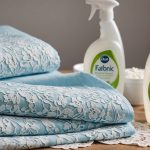Overview of Essential Fabric Softeners for Lace Garments
Choosing the right essential fabric softeners for lace garments is crucial for maintaining fabric maintenance and enhancing fabric longevity. Lace, being a delicate textile, requires special care to preserve its intricate patterns and softness.
Using an inappropriate fabric softener may deteriorate lace’s quality, lead to damage, or reduce its lifespan. Therefore, understanding how various products affect delicate fabrics is vital. For example, some softeners can cause yellowing or leave residue, compromising the garment’s appearance.
Also read : Shop stylish handbags for every occasion
In the UK, regional preferences impact purchasing habits for lace garments care. Users tend to favour products that guarantee safety for delicate fibres, demonstrating a keen interest in preserving heirloom-quality lace. This behaviour underscores the importance of selecting softeners that have undergone rigorous testing to ensure they meet regional demands.
Preferences might vary due to essential fabric softeners availability, brand reputation, or eco-friendly options, which are increasingly in demand. Consumers are advised to pay attention to product ingredients and user reviews, as these provide invaluable insights into product efficacy.
In the same genre : Chic Umbrella Combos: Amp Up Your London Rainy Day Fashion!
To aid in lace garments care, consider experimenting with different fabric softeners, keeping an eye on those with fabric protection claims. Always follow garment label instructions for optimal maintenance and ensure the long-term beauty of your delicate pieces.
Top Recommendations for Fabric Softeners Suitable for Lace
When it comes to best fabric softeners tailored for lace, the choices are plenty but require discerning selection. With lace’s delicate nature, it’s crucial to opt for products specifically designed to protect its intricate patterns.
Brand A: Features and Benefits
Brand A offers lace-friendly products that are well-loved for their gentle yet effective formula. A noteworthy feature is its use of natural oils, which not only smooth out fibres but also add a subtle fragrance. According to user reviews, this softener receives praise for maintaining the fabric’s integrity without leaving residues. For optimal results, users are advised to follow the dosage instructions diligently to avoid any over-softening.
Brand B: Features and Benefits
In comparison to Brand A, Brand B boasts unique selling points like hypoallergenic properties, making it an excellent choice for those with sensitive skin. Users report that it excels in preventing static cling in delicate fabrics. While both brands are top contenders, Brand B’s slight edge lies in its skin-friendly formulation.
Brand C: Features and Benefits
For the environmentally conscious, Brand C delivers eco-friendly options. Its ingredients are biodegradable, and it remains highly effective in maintaining the soft texture of lace. Textile experts often recommend it for its limited environmental impact, proving that sustainability and quality care can go hand in hand.
Key Ingredients to Look for in Fabric Softeners
When selecting fabric softener ingredients, understanding the benefits of natural versus synthetic elements is essential for effective lace maintenance. Natural components, such as plant-based oils, are often gentle on delicate fabrics and enhance the softness and durability of lace garments without leaving residues. These essential components are favoured for their minimal environmental impact and reduced risk of allergic reactions.
Synthetic ingredients, while common, may include harsh chemicals that could risk the delicate structure of lace, affecting both its appearance and longevity. It’s crucial to scrutinise these ingredients and recognise their potential impact on your garments. Often, synthetic softeners include preservatives like quaternary ammonium compounds, which can be less desirable due to their potential to cause irritation or build-up.
Common allergens in fabric softeners, such as strong fragrances or dyes, can pose problems for individuals with sensitive skin or allergies. These ingredients may not only affect the user’s well-being but also degrade the lace over time, leading to discolouration or rough texture.
To maintain your lace in pristine condition, it’s advisable to prioritise natural fabric softener ingredients and to conduct patch tests. By doing so, you can avoid compromising the integrity and aesthetics of your cherished lace garments.
Alternatives to Traditional Fabric Softeners
In the pursuit of effective lace garment maintenance, many explore fabric softener alternatives. These options provide benefits and peace of mind, particularly for those aiming for a more natural fabric care approach.
Vinegar as a Fabric Softener Alternative
Vinegar emerges as a popular substitute due to its natural properties. It is effective in softening without leaving residues. Users need only add a modest amount during the rinse cycle to notice results. This alternative is safe for lace garments, preserving their delicate structure. However, the distinct vinegar smell may be a drawback for some, although it typically dissipates as the fabric dries.
Baking Soda and Its Benefits
Baking soda stands out for its ability to keep fabrics soft while removing odours. By dissolving a small quantity into the water, it gently treats lace without harsh effects, promoting prolonged wear. This mild substance boasts safety for delicate items like lace, ensuring no subsequent discolouration or damage.
Commercial Alternatives: Overview of Options
A variety of specialty fabric sprays offer precise application and control compared to traditional softeners. These can be particularly handy for targeting specific areas or materials. Many of these products receive commendations in user feedback for their innovative formulas and versatility.
Potential Drawbacks of Fabric Softeners on Lace
When considering fabric softener drawbacks, it is essential to understand the impact of certain products on lace garments. One primary concern is the potential degradation of the fabric’s breathability and absorbency. Delicate care is vital, as some softeners might clog fibres, leading to stiff or misshapen lace.
Another issue encountered with certain products is the residue they may leave behind. This can cause a dull film on the lace or even alter its colour. Such changes might compromise the visual appeal and delicate intricacies characteristic of lace.
Moreover, fabric softeners may introduce chemicals that affect the structural integrity of the lace over time. The delicate weave could become weaker, thereby increasing susceptibility to tearing.
To mitigate these concerns, recommendations for cautious use are paramount. Users should follow specific instructions and conduct patch tests before widespread application. Opting for lace-friendly alternatives, or those with minimal harsh chemicals, can prevent damage and extend the lifespan of treasured garments.
By being aware of these potential pitfalls and taking a proactive approach to lace garment care, users can protect their delicate fabrics while still enjoying the benefits of fabric softeners.
Practical Tips for Maintaining Lace Garments
Lace garments require meticulous care to ensure their fragile beauty endures. Here are key tips for effective lace garment care:
Washing Techniques Recommended for Lace Items
Washing lace by hand is often preferred. Use lukewarm water with a mild detergent. Gently agitate the garment without twisting or wringing, as this can distort its delicate structure. For machine washing, place the lace in a protective mesh bag and select a delicate cycle.
Storage Advice to Prevent Damage
Proper storage is essential to maintain lace’s integrity. Hanging lace garments may cause stretching, so folding is advisable. Use tissue paper between folds to prevent fabric flattening. For long-term storage, keep lace garments in a breathable cotton bag to protect them from dust and light.
Frequency of Softener Use for Longevity
To preserve the intricate patterns of lace, limit fabric softener application. Overuse might lead to residue build-up, affecting the fabric’s texture. Occasionally incorporating a gentle softener can help maintain softness; however, always adhere to recommended dosages provided by the manufacturer. For longer-term preservation, opt for natural alternatives like vinegar or baking soda, ensuring to monitor the fabric for any adverse reactions.
User Testimonials and Case Studies
Understanding how different fabric softeners perform through user experiences provides valuable insights into lace garment care. Reviews offer practical perspectives on the effectiveness and potential challenges. Below are detailed accounts from users of specific brands.
Case Study 1: Experience with Brand A
Brand A is praised for its gentle touch on lace garments, particularly in preserving their intricate patterns. Users report a noticeable enhancement in the fabric’s softness without compromising on integrity or leaving unwanted residues. Detailed analyses highlight how the natural oils in its formula contribute significantly to maintaining the lace’s delicate texture. Those who follow usage instructions closely experience enhanced fabric maintenance, reinforcing the importance of correct application.
Case Study 2: Experience with Brand B
In contrast, some users find Brand B ideal for sensitive skin, due to its hypoallergenic properties. Challenges primarily involve static cling prevention. Regular users notice its efficacy across varying lace types, suggesting it’s particularly suited for diverse fabric designs. This brand impresses with its unique lace-friendly products formulated to avoid irritation, enhancing user satisfaction.
Summary of User Feedback Across Products
Common themes in reviews emphasise the importance of ingredient transparency and application guidance. Many appreciate eco-friendly formulations and the promise of lace maintenance without harsh additives. Aggregate ratings indicate user preference leans towards products balancing performance with gentle care. These insights underscore the value of fabric softener reviews in making informed purchasing decisions.











